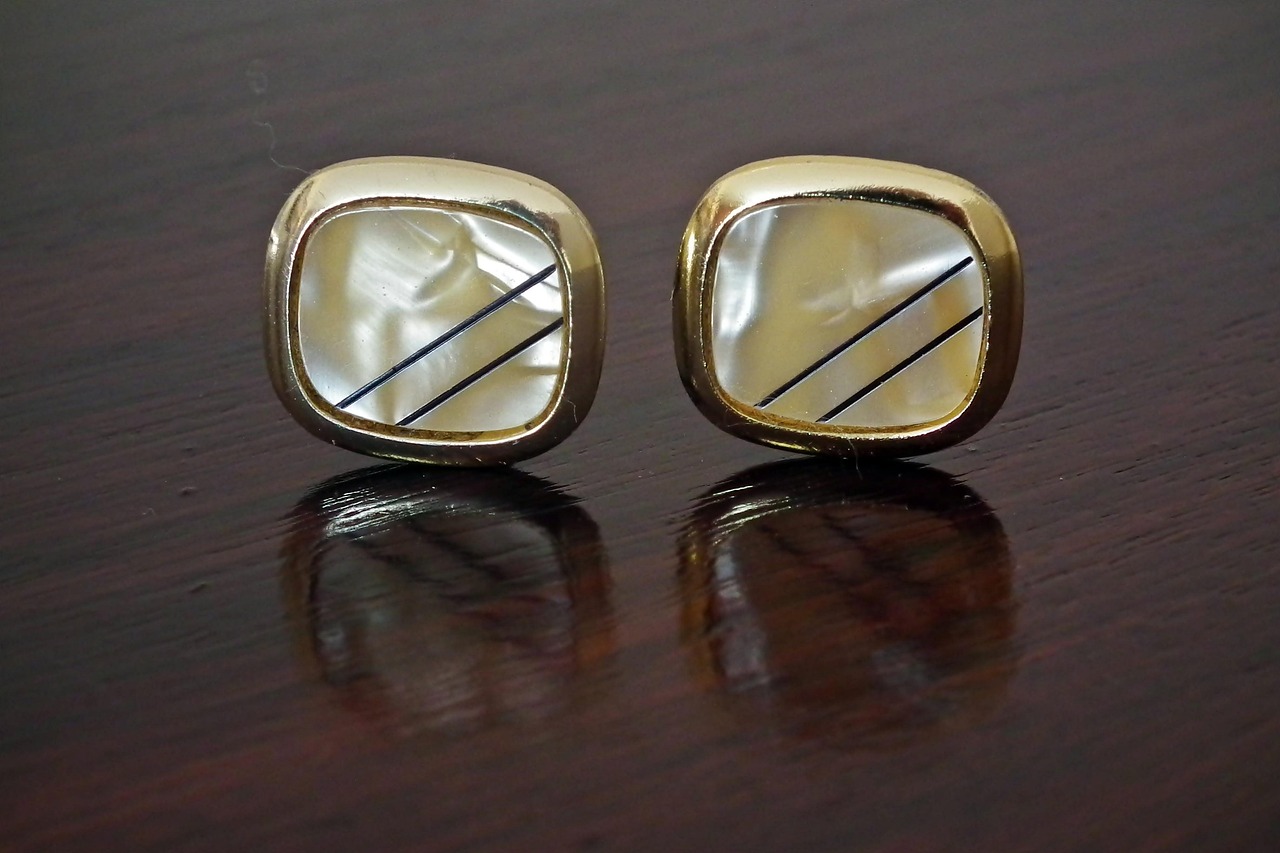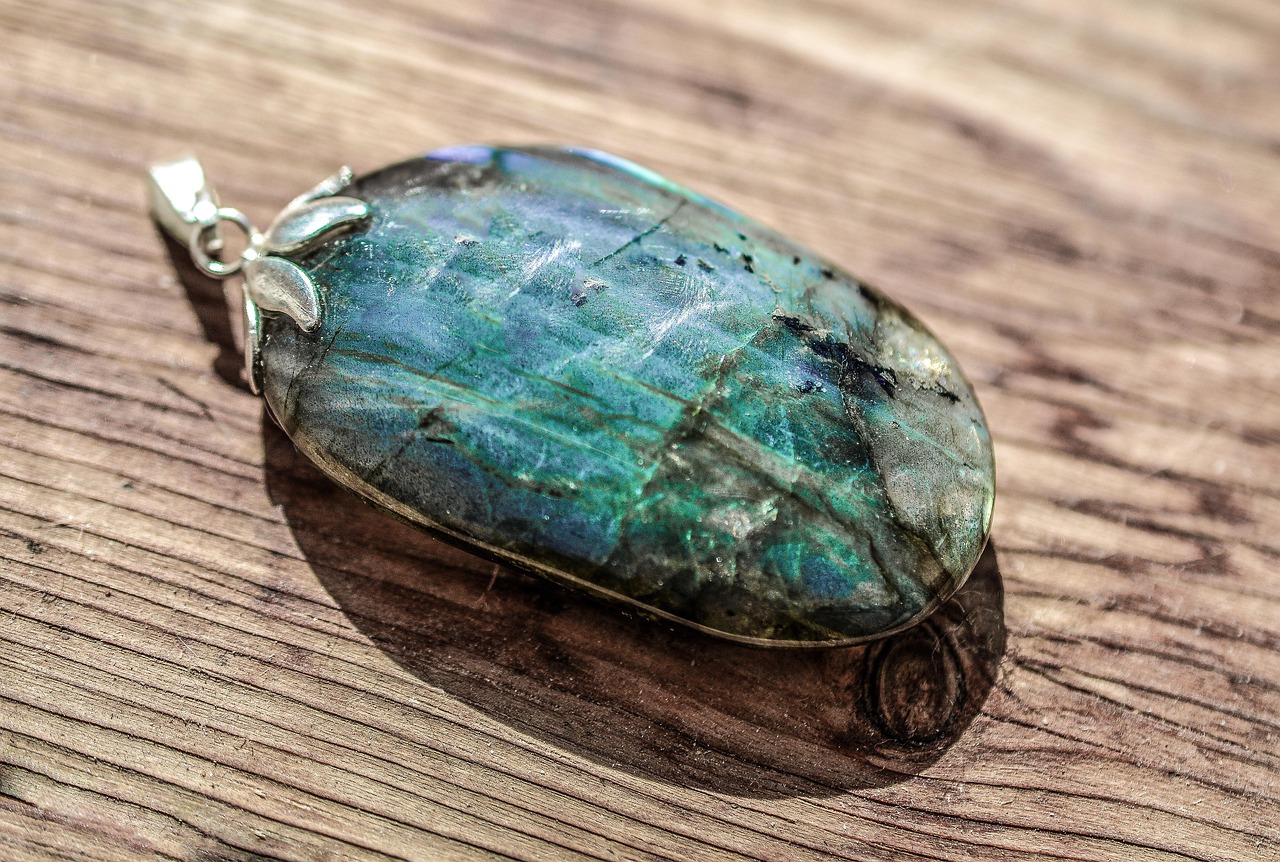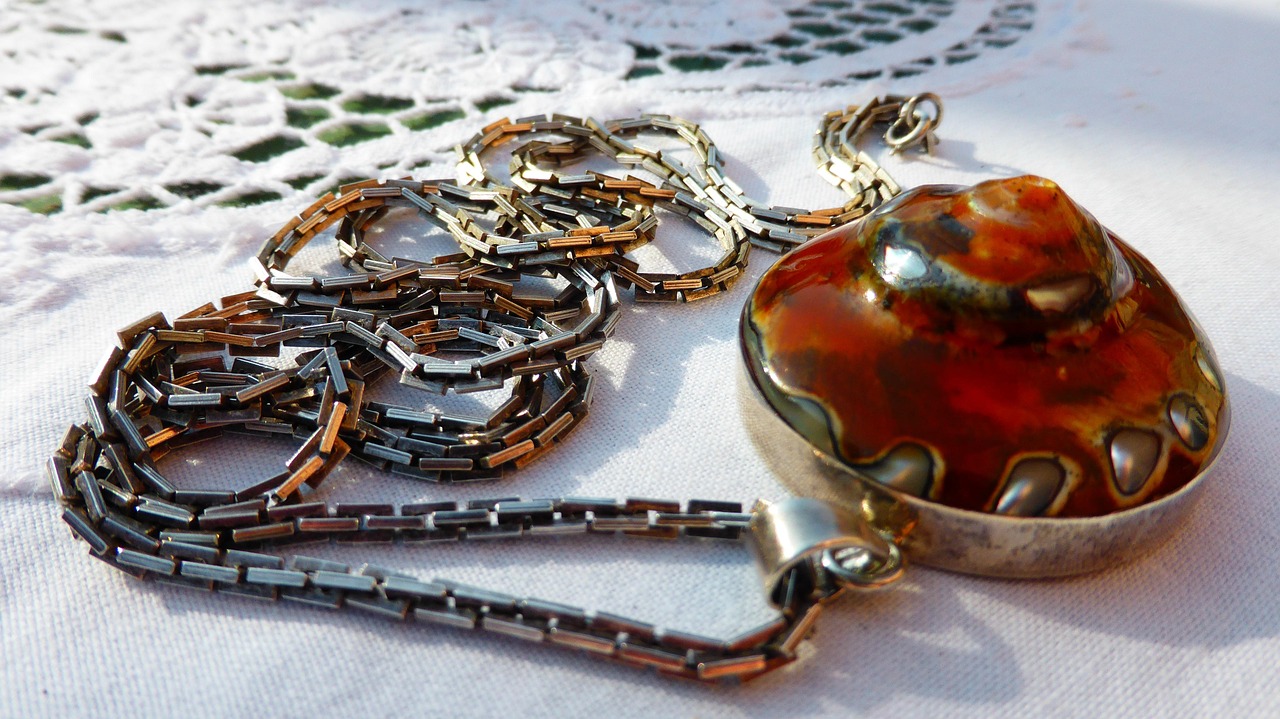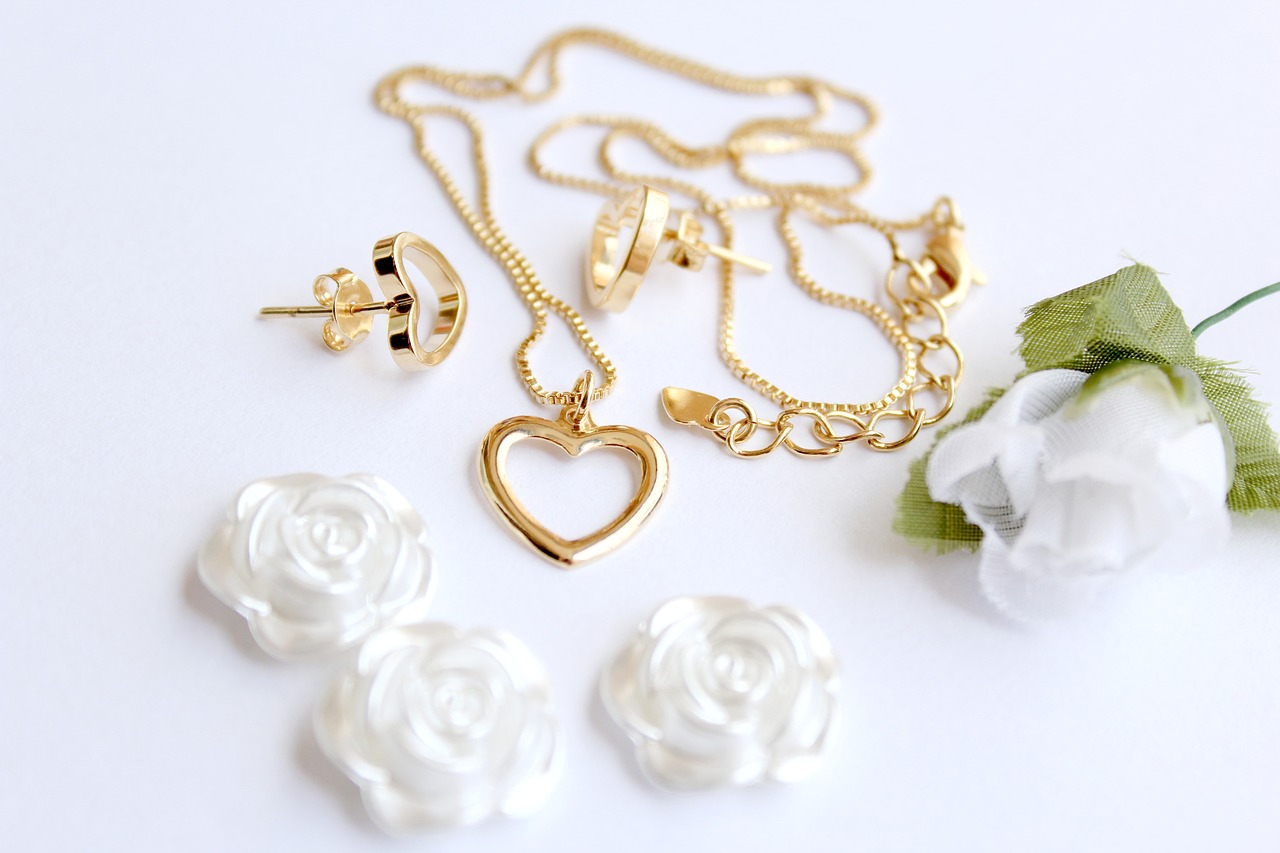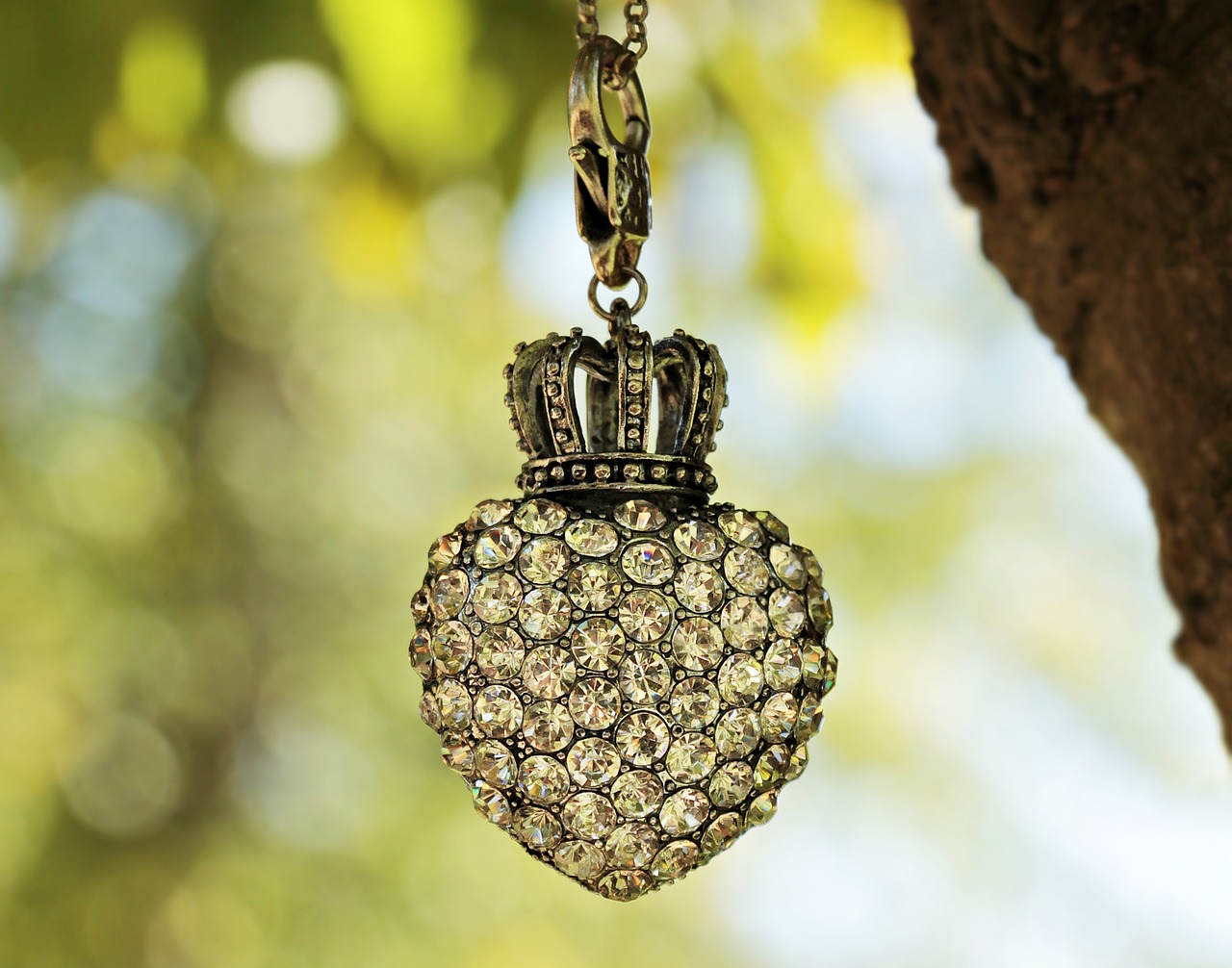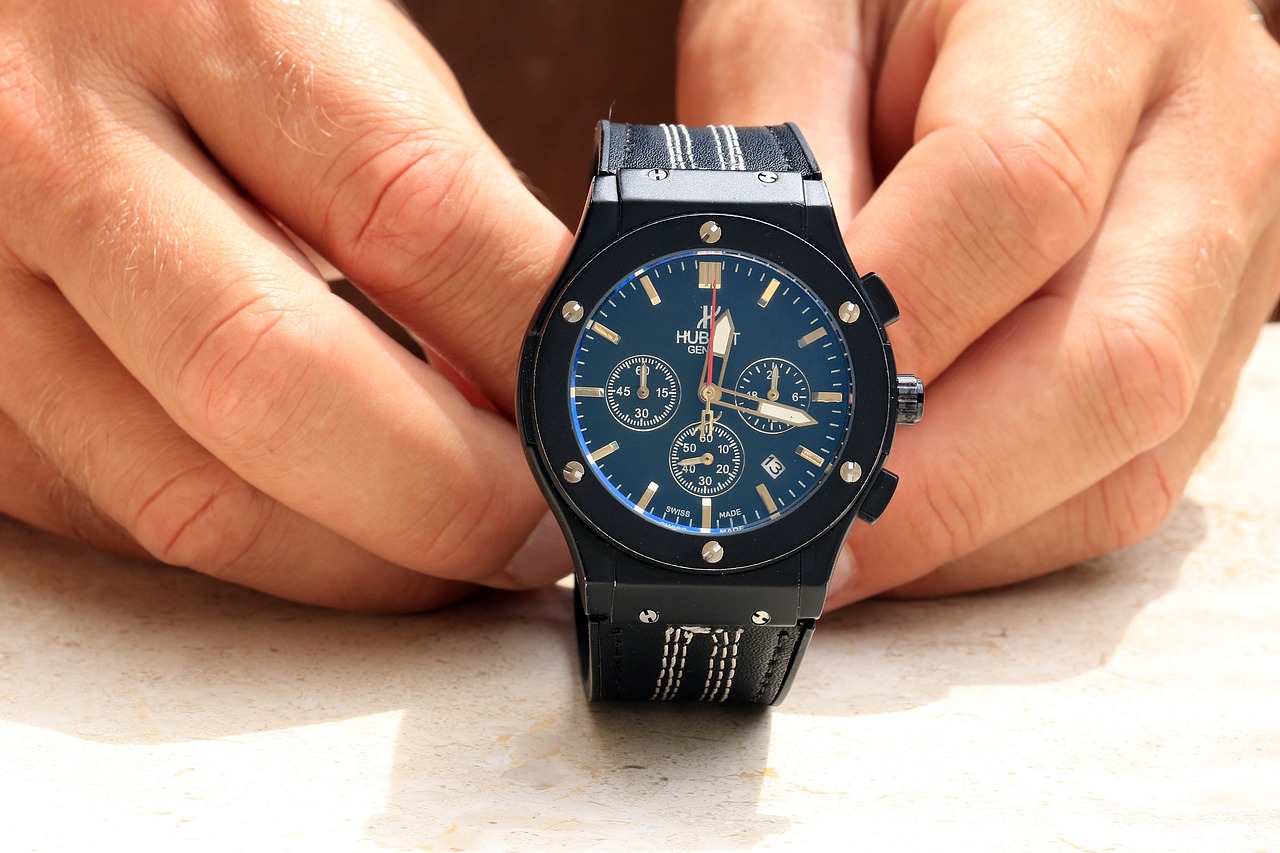This guide provides essential insights into investing in gold jewelry, covering key considerations, market trends, and practical tips for making informed purchases that align with your financial goals. Investing in gold jewelry not only offers aesthetic appeal but also serves as a tangible asset that can appreciate over time.
Understanding the reasons for investing in gold jewelry is crucial. It combines aesthetic value with financial security, often serving as a hedge against inflation and economic instability. Gold jewelry can also be a form of wealth that can be passed down through generations.
Before making a purchase, consider factors such as purity, craftsmanship, and market trends. These elements significantly impact the value and longevity of your investment.
Gold purity is measured in karats, with 24K being pure gold. Knowing the difference between 14K, 18K, and 22K is essential for evaluating quality and price.
24K gold is the highest purity level, making it the most malleable and valuable. However, it is less durable, which can be a concern for jewelry that is worn frequently.
14K gold contains 58.3% gold and is more durable than higher karat gold. It is a popular choice for everyday jewelry due to its balance of quality and strength.
The craftsmanship and design of gold jewelry can greatly influence its value. Investing in pieces with intricate designs or renowned craftsmanship can yield better returns. Look for unique styles or limited editions that may appreciate over time.
Choosing the right place to buy gold jewelry is vital for ensuring authenticity and fair pricing. Consider reputable jewelers, online platforms, and auctions.
When selecting a jeweler, look for certifications, customer reviews, and a transparent return policy. These factors can help you feel confident in your purchase.
Online marketplaces offer convenience and variety but require careful scrutiny. Always check seller ratings and return policies before purchasing to avoid scams.
Understanding how to assess the market value of gold jewelry is key to making informed investment decisions. Various factors influence pricing, including gold market rates and demand.
Utilize online tools and resources to track gold prices regularly. This information can help you determine the right time to buy or sell your jewelry.
Stay informed about market trends and consumer demand for gold jewelry. Seasonal trends, fashion influences, and global economic conditions can all affect prices.
Every investment carries risks, and gold jewelry is no exception. Understanding potential pitfalls can help you navigate the market more effectively.
Gold prices can fluctuate significantly due to economic conditions. Being aware of these changes can help you make timely decisions regarding your investment.
Counterfeit gold jewelry is a genuine concern. Always ensure authenticity through certifications and reliable sources to protect your investment.
Proper maintenance and care are essential for preserving the value and appearance of your gold jewelry. Regular cleaning and safe storage can prolong its life.
Using gentle cleaning methods can help maintain the luster of your gold jewelry. Avoid harsh chemicals and opt for mild soap and water solutions.
Store your gold jewelry in a cool, dry place, preferably in a lined box or pouch to prevent scratches and tarnishing. Proper storage can significantly extend its lifespan.

Why Invest in Gold Jewelry?
Investing in gold jewelry is not merely about acquiring beautiful pieces; it represents a strategic financial decision that marries artistry with economic prudence. In today’s volatile financial climate, understanding the importance of investing in gold jewelry can enhance your portfolio while providing aesthetic pleasure.
Understanding the reasons for investing in gold jewelry is crucial. It combines aesthetic value with financial security, often serving as a hedge against inflation and economic instability. Gold has been a cherished asset for centuries, providing a sense of stability and wealth preservation.
- Inflation Hedge: Gold jewelry retains its value over time, making it a reliable safeguard against inflation. As the cost of living rises, so does the price of gold, ensuring that your investment remains intact.
- Economic Stability: During times of economic uncertainty, gold often outperforms other investments. It is a tangible asset that can provide peace of mind when markets are volatile.
- Intrinsic Value: Unlike stocks or bonds, gold jewelry has intrinsic value. The craftsmanship and artistry involved in creating jewelry can add to its worth, making it a dual-purpose investment.
Moreover, gold jewelry can be a personal statement, reflecting one’s style and taste. This duality of purpose—both as an investment and a fashion accessory—makes it an appealing choice for many. When you wear gold jewelry, you not only showcase beauty but also carry a piece of financial security with you.
Several factors contribute to the desirability of gold jewelry as an investment. First, the purity of gold is paramount. Jewelry is often measured in karats, with 24K being the purest form. Understanding these measurements can help you make informed decisions regarding quality and value.
| Karats | Gold Content (%) | Common Uses |
|---|---|---|
| 24K | 99.9% | Investment and fine jewelry |
| 18K | 75% | Fine jewelry |
| 14K | 58.3% | Everyday jewelry |
Additionally, the craftsmanship and design of the jewelry can significantly influence its investment potential. Pieces created by renowned artisans or featuring intricate designs tend to appreciate in value more than mass-produced items.
When investing in gold jewelry, consider factors such as the reputation of the jeweler, the authenticity of the gold, and the overall design. Always look for certifications that verify the gold’s purity and ensure that the jeweler has a solid track record.
- Seek Reputable Jewelers: Look for jewelers with positive customer reviews and transparent return policies. This can help mitigate the risk of purchasing counterfeit items.
- Research Market Trends: Stay informed about current trends in gold prices and jewelry styles. This knowledge can aid in making timely and profitable investment decisions.
In conclusion, investing in gold jewelry presents a unique opportunity to blend financial strategy with personal expression. With the right knowledge and careful consideration, you can make informed decisions that will benefit you both aesthetically and financially.
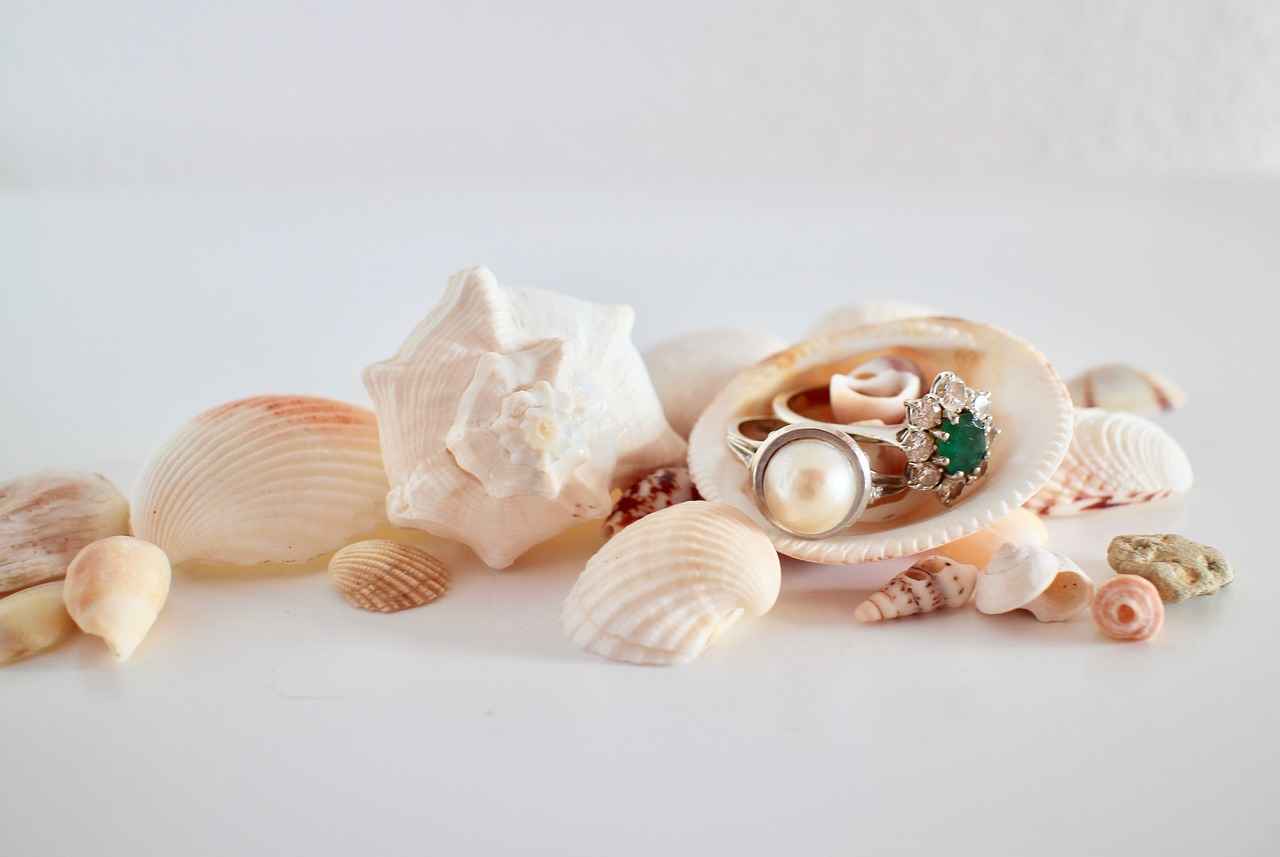
What to Consider Before Buying Gold Jewelry?
Investing in gold jewelry can be a rewarding experience, but it requires careful consideration. Before making a purchase, it is crucial to evaluate several key factors that can significantly influence your investment’s value and longevity. Here, we delve into the essential elements to consider when buying gold jewelry.
- Purity of Gold: The purity of gold is measured in karats, with 24K being the purest form. However, the higher the karat, the softer the gold, which may not be suitable for everyday wear. Understanding the differences between 14K, 18K, and 22K gold is essential for making an informed choice that balances durability and value.
- Craftsmanship: The craftsmanship of gold jewelry impacts not only its aesthetic appeal but also its resale value. Jewelry crafted by renowned artisans or brands often holds greater value over time. Look for intricate designs and attention to detail, as these elements can enhance the investment quality of your piece.
- Market Trends: Keeping an eye on market trends is vital when investing in gold jewelry. Prices can fluctuate based on economic conditions, fashion trends, and consumer demand. Researching current trends can help you make a timely purchase that aligns with market conditions.
The purity of gold is a significant determinant of its value. As mentioned, 24K gold is the purest form, but it is also the most malleable and can be easily scratched or damaged. On the other hand, 14K gold, which contains 58.3% gold, offers a balance of durability and aesthetic appeal, making it a popular choice for everyday jewelry. Understanding these differences can help you select pieces that not only meet your style preferences but also serve as sound investments.
Investing in gold jewelry goes beyond the metal itself; it encompasses the artistry and skill involved in its creation. High-quality craftsmanship can elevate a piece’s value, making it more desirable to collectors and investors alike. When evaluating jewelry, look for smooth finishes, secure settings for gemstones, and overall design integrity. Investing in well-crafted pieces can lead to better returns in the long run.
Staying informed about market trends is essential for making wise investment choices. Utilize various resources such as financial news websites, jewelry trade publications, and market analysis reports. Joining online forums or social media groups dedicated to jewelry investment can also provide valuable insights and tips from fellow investors. By staying updated, you can make informed decisions about when to buy or sell your gold jewelry.
- Authenticity: Always ensure that the gold jewelry you are purchasing is authentic. Look for certification from reputable sources, as this can protect you from counterfeit products.
- Resale Potential: Consider the potential resale value of the piece. Jewelry with timeless designs or that is part of a limited collection often retains value better than trendy items.
- Condition: Assess the condition of the jewelry carefully. Any signs of wear or damage can affect its overall value, so choose pieces that are well-maintained.
By taking the time to evaluate these factors, you can make informed decisions that align with your investment goals. Remember, investing in gold jewelry is not just about the immediate purchase; it’s about considering the long-term value and enjoyment of your investment.
Understanding Gold Purity: Karats Explained
When it comes to investing in gold jewelry, understanding gold purity is paramount. Gold purity is measured in karats, with 24K being recognized as pure gold. However, not all gold is created equal, and knowing the distinctions between 14K, 18K, and 22K gold is essential for evaluating both quality and price.
Gold purity refers to the amount of gold present in a piece of jewelry compared to other metals. This measurement is expressed in karats (K), where 24K signifies pure gold, meaning it contains 99.9% gold content. The remaining karat values indicate the proportion of gold mixed with other metals, which can affect both durability and appearance.
- 24K Gold: As mentioned, this is the highest purity level, offering a rich yellow hue and exceptional luster. However, it is also the most malleable and can be easily scratched or bent, making it less suitable for everyday wear.
- 22K Gold: Comprising 91.6% gold, 22K gold is a popular choice for high-end jewelry. It retains a beautiful color and is more durable than 24K, making it a great option for intricate designs.
- 18K Gold: With 75% gold content, 18K gold strikes a balance between purity and durability. It is widely used in fine jewelry and offers a rich color while being sturdy enough for daily use.
- 14K Gold: Containing 58.3% gold, 14K gold is the most commonly used alloy in the United States. It is highly durable and resistant to wear, making it ideal for everyday jewelry pieces.
Understanding the purity of gold is crucial for several reasons:
- Value Assessment: Higher karat gold generally commands higher prices due to its greater gold content. Knowing the karat can help you assess whether you are getting a fair deal.
- Durability: Lower karat gold is often more durable and resistant to scratches and tarnishing, making it a practical choice for daily wear.
- Allergy Considerations: Some individuals may be allergic to certain metals used in lower karat gold. Understanding the composition can help avoid allergic reactions.
Choosing the appropriate karat depends on your personal preferences and intended use. If you seek investment quality and aesthetic appeal, 22K or 24K may be suitable. For everyday wear, consider 14K or 18K for their durability and lower maintenance.
When searching for gold jewelry, always seek out reputable jewelers who provide certification of authenticity. Look for customer reviews and transparent pricing policies to ensure you make a wise investment.
In summary, understanding gold purity is essential for anyone looking to invest in gold jewelry. By familiarizing yourself with the different karat values and their implications on quality and price, you can make informed decisions that align with your financial goals.
What is 24K Gold?
When it comes to gold, purity is a crucial factor that significantly influences both its value and application in jewelry. 24K gold is considered the highest purity level of gold available, comprising 99.9% pure gold. This exceptional purity makes it the most malleable and valuable form of gold, allowing jewelers to create intricate designs and shapes that are simply unattainable with lower karat gold.
However, while 24K gold boasts impressive characteristics, it also has its drawbacks. One of the primary concerns is its durability. Due to its high purity, 24K gold is softer than its lower karat counterparts, making it more susceptible to scratches, dents, and deformation. This can be a significant drawback for those looking to purchase jewelry for everyday wear. For instance, a 24K gold ring may lose its shape or develop scratches over time, which can detract from its aesthetic appeal.
In contrast, lower karat gold, such as 18K or 14K, contains a mixture of gold and other metals, which enhances its strength and durability. While these options may not possess the same level of purity as 24K gold, they offer a practical solution for individuals seeking jewelry that can withstand daily wear and tear. Thus, understanding the balance between purity and durability is essential when investing in gold jewelry.
Furthermore, the market demand for 24K gold can fluctuate based on various factors, including economic conditions and cultural preferences. In many Asian cultures, for instance, 24K gold is highly regarded and often used in traditional jewelry. This cultural appreciation can drive up demand, making 24K gold a potentially lucrative investment for those who understand market trends.
When considering a purchase of 24K gold jewelry, buyers should also be aware of the potential for counterfeits. Ensuring authenticity is vital, as the presence of counterfeit items can undermine the value of genuine pieces. Always seek reputable jewelers who provide proper certification to verify the authenticity of their gold products.
In summary, while 24K gold represents the pinnacle of gold purity and offers unique benefits in terms of malleability and aesthetic appeal, it also presents challenges related to durability and market fluctuations. Buyers should weigh these factors carefully and consider their personal needs and lifestyle when investing in gold jewelry. Whether you choose 24K gold or a lower karat option, understanding the nuances of gold purity will empower you to make informed decisions that align with your financial goals.
For those interested in investing, keeping abreast of market trends and maintaining awareness of the jewelry’s care and maintenance will further enhance the longevity and value of your investment.
How Does 14K Gold Compare?
When considering an investment in gold jewelry, understanding the various types of gold is essential. One of the most popular choices among consumers is 14K gold, which contains 58.3% gold and is alloyed with other metals such as copper, silver, or zinc. This composition not only enhances its durability but also makes it an ideal option for everyday wear.
Why Choose 14K Gold?
14K gold strikes a remarkable balance between quality and strength. Unlike higher karat gold, which is softer and more prone to scratches and dents, 14K gold is more resilient, making it less likely to become damaged during daily activities. This durability is particularly appealing for those seeking jewelry that can withstand the rigors of everyday life while still maintaining an elegant appearance.
Comparative Analysis: 14K vs. Higher Karats
| Type of Gold | Gold Content | Durability | Price |
|---|---|---|---|
| 14K Gold | 58.3% | High | Moderate |
| 18K Gold | 75% | Medium | Higher |
| 22K Gold | 91.7% | Low | Highest |
Value for Money
One of the significant advantages of investing in 14K gold is its affordability compared to higher karat options. Since it contains less pure gold, the price per gram is lower, making it accessible for a broader range of consumers. This affordability does not compromise quality; rather, it allows buyers to invest in pieces that offer both beauty and practicality.
Design Versatility
14K gold is not only durable but also versatile in design. Its ability to hold intricate designs and various finishes makes it a favorite among jewelers and consumers alike. From classic styles to modern trends, 14K gold jewelry can cater to diverse tastes and preferences, ensuring that there is something for everyone.
Maintenance and Care
While 14K gold is durable, proper care is still essential to maintain its luster. Regular cleaning with a mild soap solution and a soft cloth can help preserve its shine. Additionally, storing 14K gold jewelry in a lined box or pouch can prevent scratches and tarnishing, extending the life of the piece.
Conclusion
In summary, 14K gold offers a compelling combination of durability, affordability, and design versatility, making it a smart choice for both everyday wear and investment. By understanding the benefits and characteristics of 14K gold, consumers can make informed decisions that align with their lifestyle and financial goals.
Evaluating Craftsmanship and Design
When it comes to investing in gold jewelry, the craftsmanship and design of each piece play a pivotal role in determining its overall value. While the intrinsic value of gold is significant, the artistry and skill that go into creating a piece can elevate its worth exponentially. Understanding these factors is essential for any savvy investor looking to make informed decisions.
The craftsmanship involved in creating gold jewelry can greatly influence not only its aesthetic appeal but also its market value. Jewelry that showcases intricate designs or is made by renowned artisans tends to appreciate over time. This is because such pieces are often seen as more desirable, attracting collectors and enthusiasts alike.
- Attention to Detail: High-quality pieces often exhibit meticulous attention to detail, including precise settings and flawless finishes.
- Artistic Design: Unique and innovative designs can set a piece apart, making it more appealing to potential buyers.
- Durability: Well-crafted jewelry not only looks good but is also built to last, ensuring that it retains its value over time.
The design of gold jewelry can significantly impact its marketability. Pieces that feature timeless designs often hold their value better than those that follow fleeting trends. Additionally, jewelry that tells a story or has cultural significance can command higher prices. For instance, vintage styles or pieces inspired by historical motifs often attract collectors willing to pay a premium.
Investing in pieces crafted by renowned jewelers can yield better returns. These artisans often have established reputations and a loyal customer base, which can enhance the resale value of their pieces. Look for certificates of authenticity or documentation that verifies the jeweler’s reputation and the craftsmanship behind the piece.
When evaluating gold jewelry, consider the following:
- Hallmarks: Look for stamps that indicate the gold purity and the maker’s mark, which can provide insight into the piece’s quality.
- Craftsmanship Techniques: Familiarize yourself with various techniques, such as hand engraving or filigree work, which can indicate a higher level of craftsmanship.
- Reviews and Recommendations: Seek advice from experienced jewelers or collectors who can guide you in recognizing quality craftsmanship.
In summary, the craftsmanship and design of gold jewelry are crucial factors that can greatly influence its value. By prioritizing pieces with high-quality craftsmanship and timeless designs, investors can not only enjoy the aesthetic beauty of their jewelry but also secure a wise financial investment. Remember, investing in gold jewelry is not just about the material; it’s about the artistry that enhances its allure and market value.
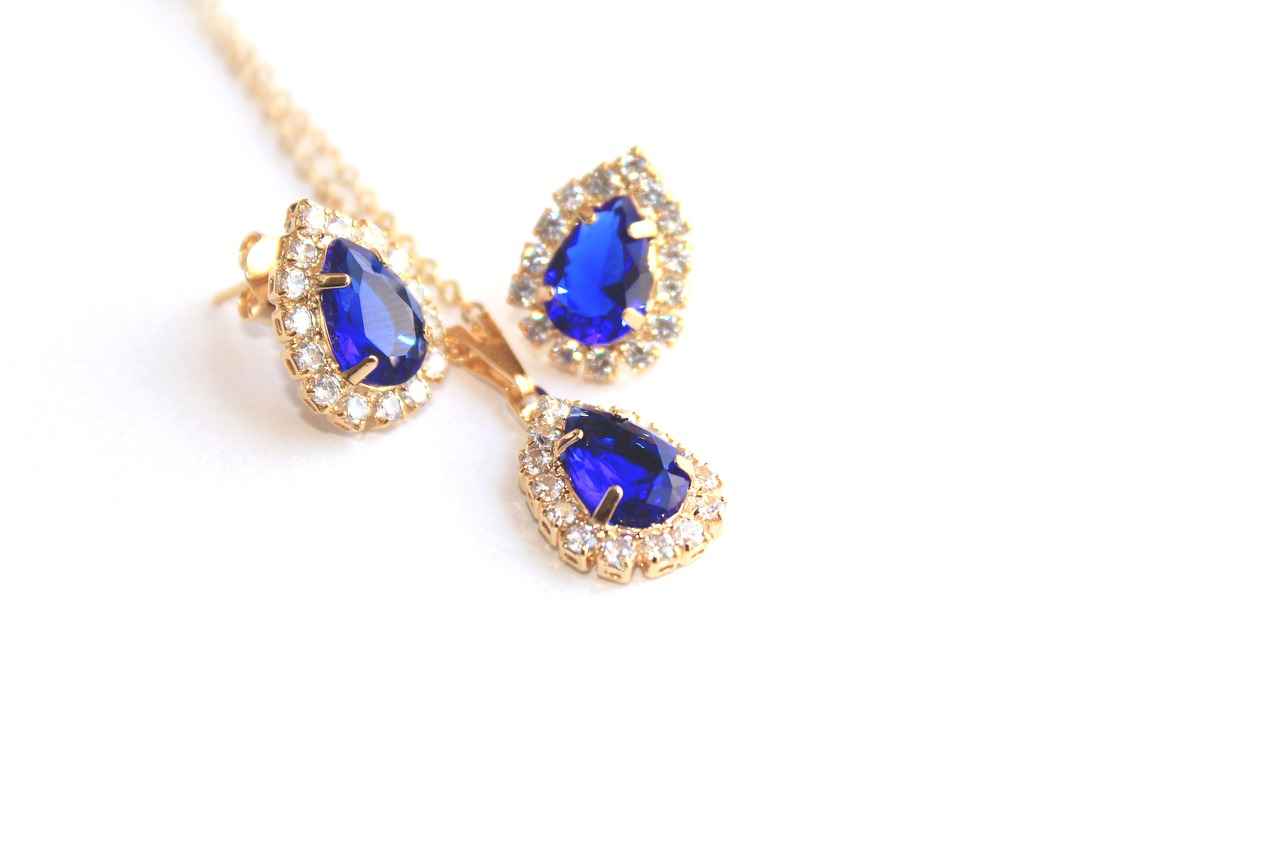
Where to Buy Gold Jewelry?
Choosing the right place to buy gold jewelry is vital for ensuring authenticity and fair pricing. With the increasing demand for gold, it is essential to navigate the market wisely. Here’s a detailed guide on where to purchase gold jewelry, focusing on reputable sources, online platforms, and auctions.
When selecting a jeweler, it is crucial to conduct thorough research. Here are some key factors to consider:
- Certifications: Look for jewelers who are certified by recognized organizations. This can provide assurance of their credibility.
- Customer Reviews: Reading reviews from previous customers can give insights into the jeweler’s reputation and service quality.
- Return Policy: A transparent return policy is essential. This allows you to return items if they do not meet your expectations.
Online marketplaces have revolutionized the way we shop for gold jewelry. They offer convenience and a vast selection, but they also come with risks:
- Convenience: Shopping online allows you to browse a wide range of products from the comfort of your home.
- Price Comparison: Online platforms make it easy to compare prices across different sellers, helping you find the best deals.
- Seller Ratings: Always check seller ratings and reviews to avoid scams. Reliable platforms often have buyer protection policies.
Buying gold jewelry at auctions can be an exciting experience. However, it requires careful consideration:
- Unique Finds: Auctions often feature unique and rare pieces that you might not find elsewhere.
- Market Knowledge: Understanding the auction process and market value is crucial. Research the items up for bid to avoid overpaying.
- Authenticity Checks: Ensure that the auction house provides authentication for the jewelry to prevent counterfeit purchases.
Deciding between local jewelers and online platforms can be challenging. Here are some considerations:
- Personal Interaction: Local jewelers offer the advantage of personal interaction, allowing you to examine items closely.
- Shipping Costs: Online purchases may incur shipping fees, which can affect the overall cost of your jewelry.
- Availability: Online platforms often have a broader selection than local stores, making it easier to find specific styles or designs.
To ensure a successful purchase, follow these practical tips:
- Set a Budget: Determine your budget before shopping to avoid overspending.
- Research Market Prices: Familiarize yourself with current gold prices to ensure you’re paying a fair amount.
- Ask Questions: Don’t hesitate to ask the jeweler or seller questions about the jewelry’s origin, materials, and care instructions.
In conclusion, whether you choose to buy from reputable jewelers, online platforms, or auctions, being informed and cautious is key. By considering the factors outlined above, you can make a confident purchase that aligns with your investment goals.
Reputable Jewelers: What to Look For?
When it comes to investing in gold jewelry, choosing a reputable jeweler is one of the most critical steps you can take. The right jeweler not only ensures that you receive quality products but also provides a sense of security and trust in your investment. Here are some essential factors to consider when selecting a jeweler:
One of the first things to look for in a jeweler is their certifications. Reputable jewelers often have certifications from recognized organizations, such as the Gemological Institute of America (GIA) or the American Gem Society (AGS). These certifications indicate that the jeweler adheres to industry standards and practices, ensuring that the jewelry you purchase is authentic and of high quality.
Customer reviews can provide valuable insights into a jeweler’s reputation and the quality of their products and services. Look for reviews on multiple platforms, including the jeweler’s website, social media, and independent review sites. Pay attention to comments regarding customer service, product quality, and the overall buying experience. A jeweler with consistently positive reviews is more likely to provide a satisfactory experience.
A transparent return policy is another crucial aspect to consider. A reputable jeweler should offer a clear and fair return policy, allowing you to return or exchange items if they do not meet your expectations. This policy not only reflects the jeweler’s confidence in their products but also gives you peace of mind, knowing that you have options if your purchase doesn’t work out.
Experience plays a significant role in the jewelry industry. Jewelers with years of experience are more likely to possess the knowledge and skills necessary to guide you in your purchase. They can provide insights into market trends, help you understand the nuances of gold purity, and assist you in selecting pieces that align with your investment goals.
After-sales support is an often-overlooked aspect of the jewelry buying process. A reputable jeweler should offer assistance even after the purchase, whether it’s for cleaning, repairs, or resizing. This level of service can enhance your overall experience and ensure that your investment remains in excellent condition over time.
In today’s market, ethical practices are becoming increasingly important. Look for jewelers who source their materials responsibly and are transparent about their supply chains. Supporting jewelers who prioritize ethical sourcing not only contributes to sustainable practices but also enhances the value of your investment.
Price transparency is vital when selecting a jeweler. A reputable jeweler should provide clear pricing information without hidden fees. Understanding the breakdown of costs, including the value of the gold, craftsmanship, and any additional features, can help you make informed decisions and avoid overpaying for your jewelry.
In summary, selecting a reputable jeweler involves considering certifications, customer reviews, return policies, experience, after-sales support, ethical practices, and price transparency. By taking the time to research and evaluate these factors, you can feel confident in your purchase and make a wise investment in gold jewelry.
Online Marketplaces: Pros and Cons
In today’s digital age, online marketplaces have transformed the way we shop, offering a vast array of products at our fingertips. However, while they provide unparalleled convenience and variety, it is essential to approach these platforms with a discerning eye. This section explores the pros and cons of shopping on online marketplaces, ensuring you make informed decisions.
- Convenience: Shop from the comfort of your home, anytime and anywhere, without the need to visit physical stores.
- Variety: Access to a wide range of products from different sellers, often at competitive prices.
- Price Comparisons: Easily compare prices across multiple sellers to find the best deals.
- User Reviews: Benefit from customer feedback and ratings that provide insights into product quality and seller reliability.
- Seller Reliability: Not all sellers maintain high standards. It’s crucial to check seller ratings and reviews before making a purchase.
- Return Policies: Return policies can vary widely between sellers. Always read the terms to understand your options if the product doesn’t meet your expectations.
- Scams and Counterfeits: The anonymity of online transactions can lead to fraudulent activities. Be cautious of deals that seem too good to be true.
- Shipping Issues: Delays, lost packages, or damaged goods can occur, impacting your overall shopping experience.
To mitigate risks while enjoying the benefits of online shopping, consider the following tips:
- Research Sellers: Before purchasing, take the time to read reviews and check the seller’s ratings. Look for sellers with a history of positive feedback.
- Understand Return Policies: Familiarize yourself with the return policies of the seller. Ensure that you have options if the item is not as described.
- Secure Payment Methods: Use secure payment options that offer buyer protection, such as credit cards or trusted payment gateways.
- Check Product Descriptions: Read product descriptions carefully to confirm the specifications, quality, and authenticity of the item.
Online marketplaces often have sales events, seasonal discounts, and exclusive deals. Keeping an eye on these opportunities can lead to significant savings. Additionally, shopping during holidays or special events can yield better prices.
In conclusion, while online marketplaces present a convenient and diverse shopping experience, it is vital to remain vigilant. By understanding the pros and cons and implementing safety measures, you can enjoy a rewarding online shopping journey.

How to Assess the Market Value of Gold Jewelry?
Investing in gold jewelry can be both an art and a science. One of the most critical aspects of this investment is understanding how to assess the market value of gold jewelry. This knowledge is essential for making informed decisions that align with your financial goals. Numerous factors influence the pricing of gold jewelry, including current gold market rates, demand, and the specific characteristics of the pieces you are considering.
When determining the market value of gold jewelry, several key factors come into play:
- Gold Purity: The purity of gold is measured in karats, with 24K representing pure gold. Understanding the karat system is vital, as higher purity generally equates to higher value.
- Current Gold Market Rates: The price of gold fluctuates based on market conditions. Keeping an eye on these rates can help you gauge the value of your jewelry.
- Demand and Trends: Consumer preferences can shift, impacting the desirability of certain styles or types of gold jewelry. Staying updated on these trends can provide insight into potential value increases.
- Craftsmanship and Design: Unique designs or high-quality craftsmanship can significantly enhance the value of a piece. Jewelry that is well-made or has historical significance often commands a premium.
To make informed investment decisions, it is essential to track gold prices regularly. Here are some effective methods:
- Online Price Trackers: Utilize reputable websites and apps that provide real-time updates on gold prices. These tools can help you make timely buying or selling decisions.
- Market Reports: Subscribe to financial news outlets or services that offer insights into gold market trends. These reports often include expert analysis and forecasts that can guide your investment strategy.
Market demand for gold jewelry can be influenced by various factors:
- Seasonal Demand: Certain times of the year, such as holidays or wedding seasons, can lead to increased demand for gold jewelry, affecting prices.
- Fashion Trends: The popularity of specific styles can fluctuate, impacting the resale value of your pieces. Keeping an eye on fashion trends can help you make better purchasing decisions.
- Global Economic Conditions: Economic stability or instability can influence consumer spending on luxury items like gold jewelry. Understanding these economic indicators can provide a clearer picture of market conditions.
Ensuring the authenticity of gold jewelry is crucial for maintaining its value. Here are some tips:
- Certification: Always ask for documentation or certification from reputable jewelers that verifies the authenticity and purity of the gold.
- Hallmarks: Look for hallmarks or stamps on the jewelry, which indicate the karat and authenticity. Familiarize yourself with common hallmarks to identify genuine pieces.
Assessing the market value of gold jewelry requires a multifaceted approach that considers purity, market rates, demand, and authenticity. By staying informed and utilizing available resources, you can make savvy investment decisions that will serve you well in the long run.
Tracking Gold Prices: Tools and Resources
In today’s dynamic market, keeping an eye on gold prices is essential for anyone interested in buying or selling gold jewelry. The fluctuations in gold prices can significantly impact your investment decisions, making it crucial to utilize various tools and resources to stay informed. Here’s how you can effectively track gold prices and make informed choices.
Gold has long been considered a safe haven asset, especially during times of economic uncertainty. By tracking gold prices regularly, you can:
- Identify the optimal times to buy or sell your jewelry.
- Understand market trends and consumer demand.
- Make informed decisions that align with your financial goals.
There are numerous online platforms that provide real-time updates on gold prices. Here are some popular options:
- Market Websites: Websites like Kitco and GoldPrice.org offer live price feeds, historical data, and analysis.
- Mobile Apps: Apps such as Gold Price Live and Investing.com can send you notifications about price changes, allowing you to act quickly.
- Social Media: Following reputable financial analysts and gold market experts on platforms like Twitter can provide insights and updates.
Staying updated with financial news is vital. Major news outlets often report on gold market trends and factors influencing prices. Subscribing to newsletters or following financial news channels can provide valuable insights.
Gold prices are influenced by various economic factors, including:
- Inflation Rates: Higher inflation often leads to increased gold prices as investors seek to preserve wealth.
- Interest Rates: Lower interest rates make gold more attractive compared to interest-bearing assets.
- Global Events: Political instability and economic crises can drive demand for gold as a safe-haven investment.
Many online platforms allow you to set price alerts. This feature notifies you when gold reaches a specific price point, ensuring you never miss a buying or selling opportunity.
By leveraging various online tools, news sources, and market insights, you can effectively track gold prices and make informed decisions regarding your investments. Whether you are a seasoned investor or a newcomer to the world of gold jewelry, staying informed is key to maximizing your investment potential.
Understanding Market Demand and Trends
Staying informed about market trends and consumer demand for gold jewelry is essential for making wise investment decisions. The jewelry market is influenced by a myriad of factors, including seasonal trends, fashion influences, and global economic conditions. Understanding these elements can help you navigate the complexities of gold jewelry investment and optimize your returns.
Seasonal trends play a significant role in the demand for gold jewelry. For instance, during the holiday season, there is typically an increase in purchases as people buy gifts for loved ones. Similarly, weddings and other celebrations often see a spike in gold jewelry sales. Fashion trends also dictate what styles and types of jewelry are in demand at any given time. Staying updated on these trends can help you make informed purchasing decisions.
Fashion influences can dramatically affect the prices of gold jewelry. Designers and celebrities often set trends that lead to increased demand for specific styles or types of gold jewelry. For instance, if a popular celebrity is seen wearing a particular design, it can lead to a surge in consumer interest and, consequently, prices. Keeping an eye on fashion shows and influencer trends can provide valuable insights into potential price movements.
The global economy has a profound impact on gold prices. Economic instability often drives investors towards gold as a safe haven asset. During times of economic uncertainty, the demand for gold jewelry can increase, leading to higher prices. Conversely, when the economy is stable, demand may decrease, resulting in lower prices. Monitoring economic indicators such as inflation rates, currency fluctuations, and geopolitical events can provide a clearer picture of market trends.
- Follow Industry Reports: Regularly read reports from reputable sources that analyze market trends and consumer behavior.
- Engage with Online Communities: Participate in forums and social media groups focused on gold jewelry investment to share insights and gain knowledge.
- Utilize Market Tracking Tools: Use online tools to monitor gold prices and market trends in real-time, ensuring you stay informed about fluctuations.
In conclusion, understanding market demand and trends is crucial for anyone looking to invest in gold jewelry. By paying attention to seasonal trends, fashion influences, and global economic conditions, you can make informed decisions that align with your investment strategy. Staying updated through various resources will empower you to navigate the market effectively.
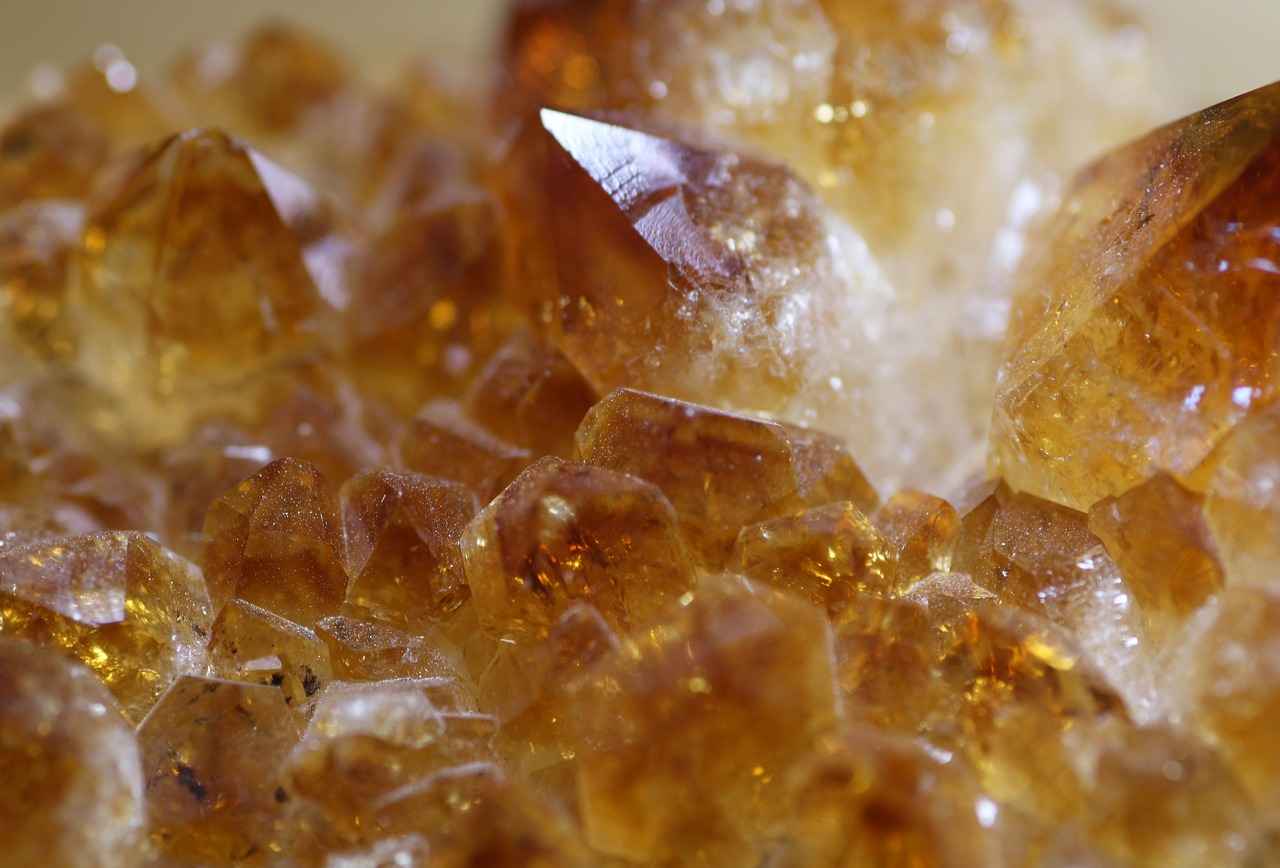
What are the Risks of Investing in Gold Jewelry?
Investing in gold jewelry can be a rewarding endeavor, but it’s essential to recognize that every investment carries inherent risks. Understanding these risks not only helps you make informed decisions but also prepares you for potential challenges in the gold market.
The gold market is known for its price fluctuations, which can be influenced by various economic factors such as inflation, interest rates, and geopolitical events. For instance, during times of economic uncertainty, demand for gold often rises, leading to higher prices. Conversely, when the economy stabilizes, prices may decline. Being aware of these trends can help you time your purchases and sales effectively.
One of the significant risks associated with gold jewelry investment is the potential for counterfeit products. With the increasing sophistication of counterfeiters, it can be challenging to distinguish between genuine and fake gold. To mitigate this risk, always purchase from reputable dealers and seek out pieces that come with certificates of authenticity. Additionally, consider having your jewelry appraised by a certified professional to ensure its legitimacy.
The quality of gold jewelry can vary significantly based on its craftsmanship and design. Poorly made pieces may not only lose their aesthetic appeal but can also decrease in value over time. When investing, look for jewelry that showcases fine craftsmanship and attention to detail. This can enhance the piece’s resale value and longevity, making it a more secure investment.
Another consideration is liquidity. Unlike stocks or bonds, gold jewelry may not be as easy to sell quickly without incurring a loss. The resale market for jewelry can be less predictable, and you may not always find a buyer willing to pay a price that reflects the piece’s intrinsic value. To improve your chances of a successful sale, keep your jewelry in excellent condition and maintain all original documentation.
Gold jewelry often carries emotional significance beyond its financial value. While this can enhance personal enjoyment, it may cloud judgment when it comes to selling. Investors should be aware of their emotional attachments and consider whether they are prepared to part with pieces for financial gain. It’s essential to strike a balance between sentiment and investment strategy.
Proper storage and maintenance of your gold jewelry are crucial for preserving its value. Exposure to harsh conditions, such as humidity or extreme temperatures, can lead to tarnishing and damage. Invest in a quality jewelry box with anti-tarnish properties and ensure that your pieces are cleaned regularly using gentle methods. This not only maintains their appearance but also protects your investment in the long term.
While investing in gold jewelry can be a lucrative venture, it is vital to understand the risks involved. By being aware of market volatility, authenticity concerns, quality issues, liquidity challenges, and the importance of proper care, you can navigate the gold jewelry market more effectively. Informed decisions and diligent research will go a long way in ensuring that your investment yields positive returns.
Market Volatility: How It Affects Your Investment
Investing in gold jewelry can be a rewarding venture, but it’s essential to understand the factors that influence its market value. One significant aspect is market volatility, which can greatly affect your investment decisions. This section will delve into how fluctuations in gold prices can impact your jewelry purchases and sales.
The price of gold is influenced by a variety of economic conditions. Factors such as inflation, interest rates, and geopolitical events can lead to significant changes in gold prices. For instance, during times of economic uncertainty or political unrest, investors often turn to gold as a safe haven, driving up its price. Conversely, when the economy is stable and interest rates rise, gold prices may decline as investors seek higher returns in other asset classes.
Being aware of gold price trends is crucial for making informed investment decisions. Regularly monitoring the market allows you to:
- Identify the Right Time to Buy: Purchasing gold jewelry when prices are low can maximize your investment potential.
- Know When to Sell: If prices rise significantly, selling your jewelry at the right moment can yield substantial profits.
- Avoid Emotional Decisions: Keeping track of market trends helps you make logical decisions rather than emotional ones.
Several tools and resources are available to help you track gold prices:
- Online Price Trackers: Websites like Kitco and GoldPrice.org provide real-time updates on gold prices.
- Mobile Apps: Apps dedicated to precious metals can send you alerts about price changes.
- Financial News Outlets: Major financial news platforms often report on gold market trends and can provide valuable insights.
The demand for gold jewelry can fluctuate based on various factors, including seasonal trends and consumer preferences. For example, during the wedding season, demand for gold jewelry often surges, which can lead to price increases. Keeping an eye on these trends can help you time your purchases effectively.
While market volatility can present opportunities for profit, it also carries risks. Rapid price changes can lead to:
- Potential Losses: If you buy gold jewelry at a high price and the market subsequently drops, you may face losses.
- Increased Anxiety: Constant price fluctuations can create uncertainty and stress for investors.
To navigate these challenges, it’s essential to develop a clear investment strategy that considers your financial goals and risk tolerance.
Understanding how market volatility affects your gold jewelry investment is crucial for making informed decisions. By staying informed about price trends and market demand, you can strategically navigate the complexities of gold investing. Remember, while gold can be a valuable asset, it’s essential to approach it with diligence and care.
Authenticity Risks: How to Avoid Counterfeits
Investing in gold jewelry can be a rewarding venture, but it comes with its share of risks, particularly related to authenticity. Counterfeit gold jewelry is a significant concern in today’s market, and being vigilant is essential for protecting your investment. Understanding how to identify genuine pieces and where to purchase them can save you from costly mistakes.
Why is Authenticity Important?
Gold jewelry is often seen as a stable investment, but its value is entirely dependent on its authenticity. Counterfeit pieces can be made from lower-quality metals or even plated with gold, leading to significant financial loss. To ensure that your investment holds its value, it is crucial to verify the authenticity of any gold jewelry you consider purchasing.
How to Identify Authentic Gold Jewelry?
- Check for Hallmarks: Authentic gold jewelry typically has stamps or hallmarks indicating its purity. Look for markings such as 10K, 14K, 18K, or 24K. The absence of these marks can be a red flag.
- Conduct a Magnet Test: Gold is not magnetic. If a piece sticks to a magnet, it is likely not genuine gold.
- Acid Test: A jeweler can perform an acid test to determine the gold’s purity. This involves applying a small amount of acid to the piece; genuine gold will not react.
Where to Buy Gold Jewelry Safely?
Choosing the right source for purchasing gold jewelry is critical. Here are some reliable options:
- Reputable Jewelers: Always buy from established jewelers with good reviews and a transparent return policy. Reputable stores often provide certifications for their pieces.
- Online Retailers: While online shopping offers convenience, it requires extra caution. Look for sellers with high ratings and clear return policies. Websites that specialize in jewelry often have strict quality controls.
- Auctions and Estate Sales: These venues can offer unique pieces at competitive prices, but it’s essential to verify authenticity through appraisals.
What Certifications Should You Look For?
When purchasing gold jewelry, always ask for certificates of authenticity. Reputable jewelers will provide documentation that verifies the quality and origin of the gold. Look for certifications from recognized authorities such as the Gemological Institute of America (GIA) or the American Gem Society (AGS).
What to Avoid When Buying Gold Jewelry?
- Unverified Sellers: Avoid purchasing from unknown or unverified sources. Always do your research before making a purchase.
- Deals That Seem Too Good to Be True: If a deal appears too good to be true, it probably is. Be cautious of significantly discounted prices.
- Ignoring Return Policies: Always check the return policy before buying. A reputable seller should offer a reasonable return period.
Final Thoughts
Investing in gold jewelry can be a fulfilling experience, but it requires due diligence to avoid counterfeit risks. By understanding how to verify authenticity and choosing reputable sources, you can protect your investment and enjoy the beauty and value of genuine gold jewelry.
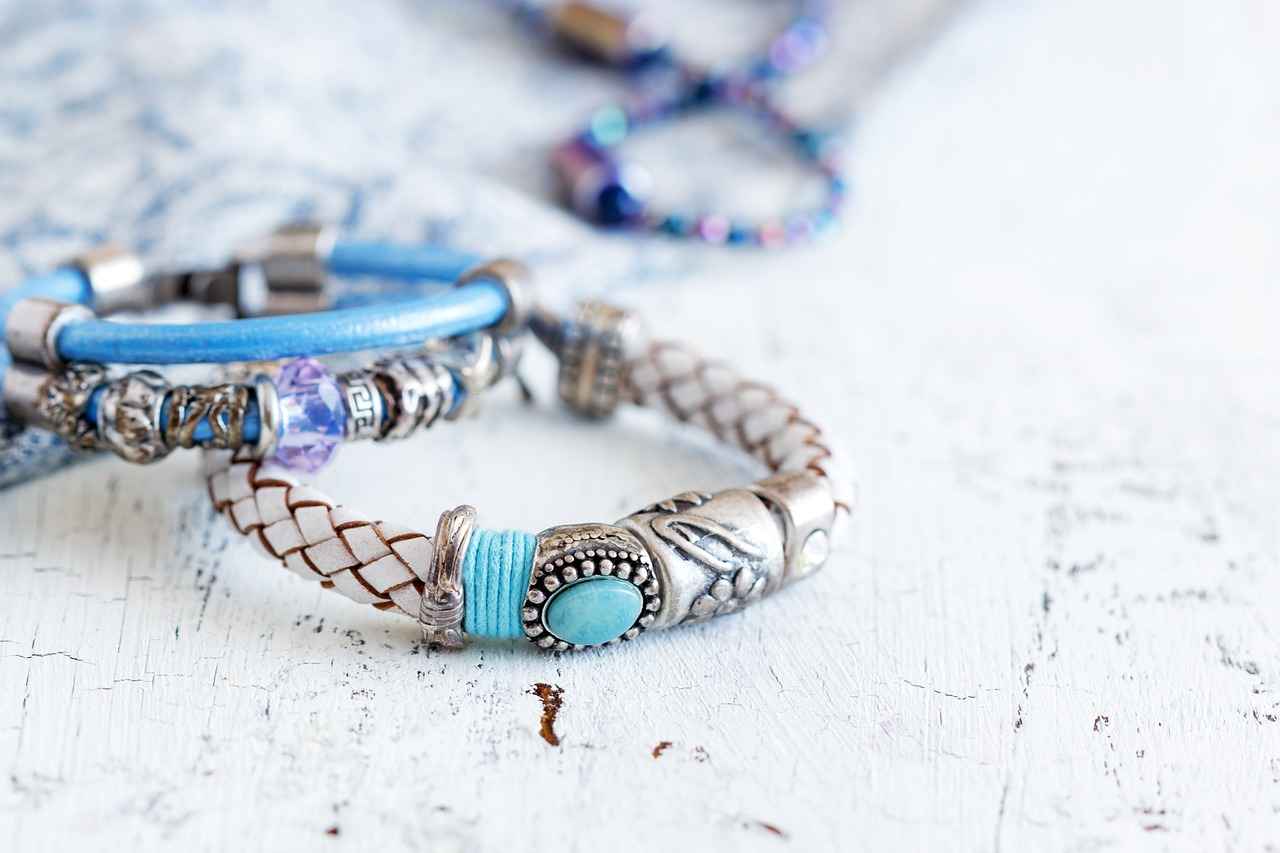
How to Maintain and Care for Your Gold Jewelry?
Proper maintenance and care are essential for preserving the value and appearance of your gold jewelry. Regular cleaning and safe storage can significantly prolong its life and ensure that your investment remains in pristine condition.
Gold jewelry can accumulate dirt, oils, and other residues over time, diminishing its shine and appeal. Regular cleaning helps to maintain its luster and prevents long-term damage. By adopting a consistent cleaning routine, you can keep your pieces looking as stunning as the day you bought them.
- Gentle Soap and Water Solution: Mix a few drops of mild liquid soap with warm water. Soak your gold jewelry for a few minutes, then gently scrub with a soft-bristled toothbrush. Rinse thoroughly and dry with a soft cloth.
- Professional Cleaning: For intricate pieces or when in doubt, consult a professional jeweler. They have the tools and expertise to clean your jewelry safely without causing damage.
- Avoid Harsh Chemicals: Stay away from bleach or abrasive cleaners, as these can scratch or tarnish your gold jewelry.
Proper storage is just as important as cleaning. The way you store your gold jewelry can prevent scratches, tangling, and tarnishing.
- Use Soft Linings: Store your gold jewelry in a lined box or pouch. This provides a cushion that protects against scratches.
- Keep Pieces Separate: Avoid storing multiple pieces together. Use individual compartments or soft pouches to prevent them from scratching each other.
- Choose the Right Environment: Store your jewelry in a cool, dry place away from direct sunlight. Humidity and heat can cause tarnishing and damage.
It’s advisable to clean your gold jewelry every few weeks, especially if you wear it frequently. Additionally, inspect your pieces regularly for any signs of wear, such as loose stones or damaged clasps. Early detection can prevent costly repairs later.
- Avoid Wearing While Performing Tasks: Take off your gold jewelry when doing chores, exercising, or swimming to prevent scratches and exposure to harsh chemicals.
- Regular Professional Check-Ups: Consider having your jewelry professionally checked once a year. Jewelers can clean, polish, and repair any damage that may have occurred.
- Be Mindful of Perfumes and Lotions: Apply perfumes and lotions before putting on your jewelry. This minimizes exposure to chemicals that can cause tarnishing.
By following these maintenance and care tips, you can ensure that your gold jewelry remains not only beautiful but also a valuable investment for years to come. Remember, a little effort goes a long way in preserving the charm and integrity of your treasured pieces.
Cleaning Techniques: Best Practices
Maintaining the beauty and integrity of your gold jewelry is essential for preserving its value over time. Using gentle cleaning methods can help maintain the luster of your gold jewelry. Avoid harsh chemicals and opt for mild soap and water solutions. Here are some effective cleaning techniques that you can easily implement at home:
- Soap and Water Solution: Mix a few drops of mild dish soap with warm water. Soak your gold jewelry for about 15-20 minutes. Use a soft-bristled toothbrush to gently scrub any intricate designs or hard-to-reach areas.
- Use a Soft Cloth: After soaking, rinse your jewelry under lukewarm water and dry it with a soft, lint-free cloth. This will help remove any remaining soap residue and restore shine.
- Ultrasonic Cleaners: For those who own ultrasonic cleaners, these can be an excellent investment. They use sound waves to create tiny bubbles that gently clean your jewelry without scratching it. However, always check if your piece is suitable for ultrasonic cleaning.
- Commercial Jewelry Cleaners: If you prefer a ready-made solution, opt for a commercial jewelry cleaner specifically designed for gold. Always follow the manufacturer’s instructions and test a small area first.
It is crucial to avoid using harsh chemicals like bleach or ammonia, as these can damage the gold and any gemstones set within the jewelry. Additionally, never use abrasive materials that could scratch the surface.
Regular cleaning is vital, but how often should you clean your gold jewelry? Ideally, you should clean your pieces every few months, especially if you wear them frequently. This routine will help prevent buildup of dirt and oils that can dull the shine.
Regular maintenance not only keeps your jewelry looking beautiful but also helps in identifying any potential issues early on. For instance, checking for loose stones or signs of wear can prevent more significant damage down the line.
Proper storage is just as important as cleaning. Store your gold jewelry in a cool, dry place, preferably in a lined box or pouch to prevent scratches and tarnishing. Avoid storing pieces together to minimize friction, which can cause scratches.
By implementing these best cleaning practices and proper storage techniques, you can ensure that your gold jewelry remains as stunning as the day you bought it. Remember, a little care goes a long way in preserving the beauty and value of your investment.
Storage Solutions: Protecting Your Investment
When it comes to investing in gold jewelry, proper storage is essential for maintaining its value and appearance over time. Many jewelry owners overlook the importance of how they store their pieces, yet the right storage solutions can significantly extend the lifespan of your investment.
Gold jewelry, while durable, is not immune to damage. Factors such as humidity, temperature fluctuations, and physical contact with other jewelry can lead to scratches and tarnishing. By understanding the significance of proper storage, you can protect your jewelry from these potential threats.
- Choose a Cool, Dry Place: Gold jewelry should be kept in a climate-controlled environment. Excessive humidity can cause tarnishing, while extreme temperatures can lead to warping or discoloration.
- Use Lined Boxes or Pouches: Store your jewelry in a soft-lined box or pouch to prevent scratches. The lining acts as a cushion, protecting the surface of your gold pieces from abrasions.
- Avoid Direct Sunlight: Prolonged exposure to sunlight can fade the color of certain gemstones and damage the integrity of the metal. Keep your jewelry in a dark place when not in use.
To maximize protection, consider organizing your gold jewelry collection. Here are some tips:
- Separate Pieces: Store different pieces separately to avoid them rubbing against each other. Use individual compartments or small pouches for each item.
- Labeling: If you have a large collection, labeling your boxes can help you quickly find specific pieces without rummaging through everything.
While there are many effective storage solutions, there are also common mistakes to avoid:
- Storing in the Bathroom: The bathroom’s humidity can lead to tarnishing. Instead, choose a bedroom or closet with stable conditions.
- Using Plastic Bags: Avoid storing your gold jewelry in plastic bags, as they can trap moisture and lead to tarnishing. Opt for breathable materials instead.
- Neglecting Regular Checks: Periodically check your stored jewelry for any signs of damage or tarnishing. Early detection can help you address issues before they worsen.
In summary, investing in gold jewelry requires more than just purchasing quality pieces. Proper storage is a crucial aspect that can protect your investment and keep your jewelry looking its best. By following the tips outlined above, you can ensure that your gold jewelry remains a cherished part of your collection for years to come.
Frequently Asked Questions
- What should I look for when buying gold jewelry?
When buying gold jewelry, focus on three key aspects: purity, craftsmanship, and design. Ensure you check the karat rating, as higher karats mean more gold content. Look for intricate designs and quality craftsmanship, as these can enhance the jewelry’s value over time.
- Is it safe to buy gold jewelry online?
Buying gold jewelry online can be safe, but it requires careful scrutiny. Always check the seller’s ratings, read customer reviews, and understand their return policy. This way, you can avoid potential scams and ensure you’re getting a genuine product.
- How can I determine the market value of my gold jewelry?
To determine the market value, keep an eye on current gold prices and market trends. Utilize online tools to track these prices and consider factors like demand and condition of your jewelry. This knowledge will help you make informed decisions about buying or selling.
- What are the risks involved in investing in gold jewelry?
Investing in gold jewelry comes with risks like market volatility and the chance of purchasing counterfeit items. Prices can fluctuate based on economic conditions, so staying informed is crucial. Always verify authenticity through reliable certifications to protect your investment.
- How should I care for my gold jewelry?
To maintain your gold jewelry, clean it regularly with mild soap and water, avoiding harsh chemicals. Store it in a cool, dry place, preferably in a lined box or pouch, to prevent scratches and tarnishing. Proper care can significantly extend the life and beauty of your pieces.

